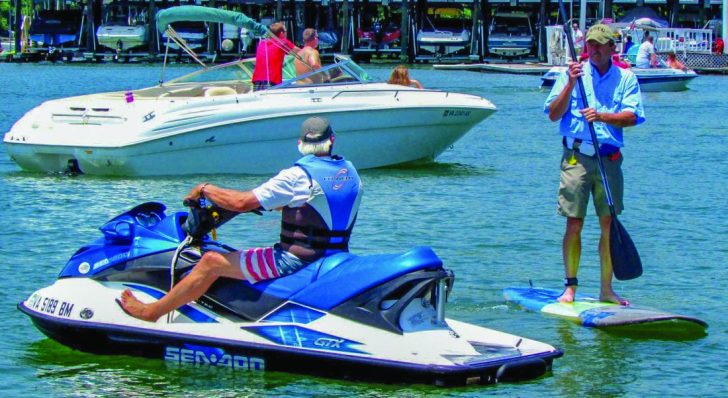by: CAM Editorial Staff

Unlike cars, there are no yellow lines to stay between; you can go anywhere you want. But just like in a car, there are some rules you must follow. The Navigation Rules and Regulations Handbook, published by the U.S. Coast Guard, includes the U.S. Inland boating Navigation Rules or NAVRULES and the international rules known as the COLREGS. These rules were developed for the purpose of avoiding collisions and keeping boaters safe. Every boat owner should have a copy and spend some time understanding them. It is mandatory to have a copy onboard any vessel over 39.4 feet in length. Taking a class on the rules can also be extremely helpful.
To break it down, the rules tell you what to do when you come across another vessel. In this case, the term “vessel” is used to classify almost anything that floats on water that can be used for transportation. That means there is a rule that applies to almost every situation involving everything from a kayak to a seaplane. They cover steering regulations as well as sound signaling equipment and navigation lights.
Boating Navigation Rules And Requirements
As a responsible boater, you should not only be familiar with the basics of how the regulations apply to the specific situations for where you are fishing. You should also try to know and understand all the requirements. If you regularly go fishing on a small lake or kayak fishing in a river, it is probably rare for you to come into contact with commercial vessels, but you still should know how to handle those situations. Also, just because you are fishing, does not mean you are always a “stand-on” vessel like a commercial fishing vessel using nets or longlines.
Knowing the rules that apply to of these situations mean the difference between good days on the water and tragedy. At a minimum, you should always have a proper lookout, operate at a safe speed and yield or give-way to another vessel when in doubt and to always avoid a collision, even if that means breaking a navigation rule to save lives and avoid damaging property.
Don’t leave the dock without knowing the rules of the road. The United States Power Squadrons–America’s Boating Club offers a seminar that simplifies the sometimes complex COLREGS for the recreational boater. Through examples, you’ll discover how to avoid collisions in various situations, the differences between power and sailboat rules, and the special rules for fishing vessels. This seminar includes student notes with slides. The downloadable U.S. Coast Guard’s Navigation Rules and Regulations Handbook is the supporting text. This seminar is also a starting point for study preparation for the USCG License examination.
For more information on boating navigation rules and how to sign-up for the seminar, visit www.americasboatingclub.org

